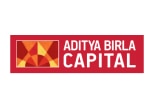

- Tax BenefitUp to 1,50,000**
- Claim SupportEveryday 10AM-7PM
- 45 Lacs+Happy Customers
*Standard Terms and Conditions Apply.
**Tax benefits are subject to changes in Income Tax Act.
What is Life Insurance Claim Settlement Ratio?
The CSR in life insurance refers to the percentage of claims settled by an insurance company compared to the total number of claims received within a particular period, usually a year.
A high Claim Settlement Ratio indicates that the insurance company has a good track record of honoring claims promptly and accurately. It moreover instills confidence in policyholders that their nominees will receive the term insurance benefits without any delays or disputes. On the other hand, a low Claim Settlement Ratio signifies potential issues such as claim rejections or claim delays, which might leave your beneficiaries at financial risk when they need financial support the most.
Not only this, but a high CSR also reflects the insurance company’s financial stability and efficiency. It suggests that the company has enough resources to fulfill its obligations and manage the life insurance claims effectively.
Why is a Claim Settlement Ratio Important?
Following are several reasons why the CSR of a life insurance company is important:
- Assessing Financial Security: Term insurance is all about securing your family's financial future in case of your untimely demise. Hence, it's important to make sure that the insurer you choose is financially stable and capable of fulfilling its promises. By checking the Claim Settlement Ratio, you can gain insights into how dependable the insurer is in honoring claims. A higher ratio indicates greater financial stability and reliability.
- Comparative Analysis: Comparing the CSR of different insurers allows you to make better decisions when selecting a life insurance provider. By evaluating multiple insurers based on their claim settlement performance, you can identify the most reliable and trustworthy option that aligns with your needs and preferences.
- Market Reputation: A favourable Claim Settlement Ratio contributes to the insurer's positive reputation within the industry. It can attract more customers, enhance brand value, and strengthen competitiveness in the market. Alternatively, a low CSR may raise concerns among policyholders and affect the insurer's market reputation.
- Transparency and Trust: Opting for an insurer with a high Claim Settlement Ratio shows the insurer's transparency and trustworthiness in their operations. This transparency is essential for your peace of mind and helps you know that your family's financial needs will be met without any unnecessary complications or delays.
- Reducing Financial Risks: In the event of your death, your family will rely on the insurance payout to meet multiple financial obligations, such as loan payments, education expenses, and daily living costs. A high Claim Settlement Ratio ensures that the insurer is efficient in processing claims, reducing the risk of financial hardship for your nominees during tough times.
How is a Claim Settlement Ratio Calculated?
The calculation of Claim Settlement Ratio can be better understood with the help of the pointers below:
- Total Claims Received: The insurance company collects data on all the claims it receives during a specific period, particularly a year.
- Total Claims Settled: Among those claims received, the company processes and settles a certain number of them. This means they approve the claim and pay out the agreed-upon amount as per the policy terms.
Claim Settlement Ratio Calculation
To calculate the CSR, simply divide the total number of claims settled by the total number of claims received, and then multiply the result by 100 to get the answer in percentage:
Claim Settlement Ratio = (Total Claims Settled /Total Claims Received) × 100
For Example: if an insurance company received 1,000 claims in a year and settled 970 of them, then CSR will be calculated in the following way:
Claim Settlement Ratio = (970/1000) × 100
So, in this example, the Claim Settlement Ratio of the insurance company will be 97%.
Term Life Insurance Premium Calculator
Gender
- Male
- Female
Date of Birth
Do you smoke or chew tobacco?
- Yes
- No
Choose required coverage to secure your family’s future
Claim Settlement Ratio of Life Insurance Companies in India
The latest Claim Settlement Ratio or CSR of all the active life insurance companies in India are as follows:
| Company Name | Claim Settlement Ratio (CSR) |
| Axis Max Life Insurance | 99.65% |
| HDFC Life Insurance | 99.39% |
| Aegon Life Insurance | 99.37% |
| Edelweiss Tokio Life Insurance | 99.20% |
| Bharti Axa Life Insurance | 99.10% |
| PNB Metlife India Insurance | 99.06% |
| Bajaj Allianz Life insurance | 99.04% |
| Canara HSBC Life Insurance | 99.01% |
| TATA AIA Life Insurance | 99.01% |
| Pramerica Life Insurance | 98.80% |
| Aviva Life Insurance | 98.75% |
| Reliance Nippon Life Insurance | 98.58% |
| Life Insurance Corporation of India | 98.52% |
| Kotak Mahindra Life Insurance | 98.25% |
| Aditya Birla Sun Life Insurance | 98.12% |
| Sahara India Life Insurance | 97.87% |
| Shriram Life Insurance | 97.40% |
| SBI Life Insurance | 97.05% |
| IndiaFirst Life Insurance | 97.04% |
| Exide Life Insurance | 96.27% |
| Star Union Dai-ichi Life Insurance | 96.07% |
| Ageas Federal Life Insurance | 96.06% |
| ICICI Prudential Life Insurance | 95.28% |
| Future Generali India Life Insurance | 95.04% |
Disclaimer: The list of insurers mentioned above is organized in descending order based on their respective Claim Settlement Ratios. InsuranceDekho neither endorses, rates nor recommends any specific insurer or insurance product offered by any insurer. The insurance plans included herein represent products offered by our partner insurers. For a comprehensive list of insurers operating in India, please refer to the official website of the Insurance Regulatory and Development Authority of India (IRDAI) at www.irdai.gov.in.
Factors That May Influence Your Claim Settlement
The reasons mentioned below can affect the life insurance claim approval process:
- Hiding Information: Some people might not tell the whole truth to try and get their claim approved without providing all the necessary proof. However, doing this can make the insurance company suspicious. They could reject your claim if they investigate and find out you've been dishonest. This can even impact the insurance company's Claim Settlement Ratio adversely.
- Ignorance By the Policyholder: It's important to take the time to understand everything in your term insurance policy. If policyholders don't understand the policy exclusions, they might make a claim for something that isn't included. In such cases, the claim might get rejected and policyholders won't get any money.
- Not Disclosing Facts: As the policyholder, it's considered dishonest if you choose not to disclose crucial details that could affect your claim. This lack of transparency can affect the insurance company's ability to effectively settle your claim.
- Error In Updating Nominee: If something happens to you, your insurance company will give the death benefit to the chosen beneficiary. But if you don't keep your nominee's details accurate and updated, it might make it challenging for your insurance company to help your nominee get the death benefit.
What is a Good Claim Settlement System?
Generally, 95% or above CSR is considered to be good. This percentage shows that out of 100 claims received in a given year, the insurer has successfully settled 90 of them.
Please note that the CSR of life insurance companies can fluctuate yearly based on the insurer's ability to handle claims. So, when purchasing a life insurance policy, it's important to look at the trend of the Claim Settlement Ratio over time rather than just one single figure. A consistently high ratio indicates reliability and customer satisfaction, while a declining ratio might signal potential issues with claim processing.
Types of Life Insurance Claims
Life insurance claims come in two types which are included below:
- Maturity Claims: Maturity Claims are paid out when the life insurance policy reaches its maturity date. This happens when the policyholder completes the entire policy term and survives until the end.
To receive a maturity claim, the policyholder must fill out a discharge form. The amount received from a maturity claim is not taxed under the current Income Tax Act, 1961, provided that premiums have been paid on time.
- Death Claims: Death claims refer to the amount payable by an insurance company to the beneficiaries of a life insurance policy upon the death of the insured individual. When the policyholder passes away, the nominees named in the policy are entitled to receive the death benefit, which is the sum assured or the coverage amount specified in the policy contract. This benefit is paid out to provide financial support to the dependents or beneficiaries of the deceased policyholder.
To initiate a death claim, the beneficiary needs to inform the insurance company of the policyholder's death, including details such as the policy number, date and cause of death, and the policy term. The insurance company then investigates the claim. The death benefit amount is also tax-free under Section 10(10D) of the Income Tax Act, 1961.
Documents Required for Life Insurance Claims
Following is the list of some of the mandatory documents required for life insurance claims:
- Claim Forms (Duly signed and attested)
- Original Policy Documents
- Death Certificate attested by the local authorities
- Copy of FIR/Post Mortem Reports/Punchnama
- Medical Records (including hospital discharge summary)
- Claimant’s Photo ID Proof
- Claimant’s Address Proof
- Copy of Cancelled Cheque/Bank Statement/Bank Passbook
Claim Settlement Process of Life Insurers in India
Listed below is the process of life insurance claim settlement followed by most of the insurance companies. However, every insurance operates differently hence the claim settlement process for a life insurance claim can differ from insurer to insurer:
Step 1: Notification of Claim
Upon the insured individual's demise, the designated nominee must contact the respective insurance company promptly.
InsuranceDekho Support: We extend our assistance to the nominee or family members in initiating the claim process efficiently.
Step 2: Submission of Documentation
The nominee is required to furnish essential documents including the Policy Number, Death Certificate, and valid Government ID to the insurance provider. Depending on the circumstances surrounding the death, additional documentation such as an FIR Report or Postmortem Report may be necessary.
InsuranceDekho Support: InsuranceDekho helps the nominee or family members of the policyholder in handling the complexities associated with gathering and submitting required documents, and addressing queries.
Step 3: Review of Claim
After receiving the required documents, the insurance company will thoroughly assess the claim.
InsuranceDekho Support: InsuranceDekho ensures continuous communication with the nominee or family members throughout the claim review process by maintaining close collaboration with the insurance provider.
Step 4: Settlement of Claim
Upon approval, the claim proceeds to the settlement stage where the life insurance policy benefits are processed for disbursement.
InsuranceDekho Support: We strive to expedite and streamline the claim settlement process, ensuring a seamless experience for the nominee.
Note: If there is no nominated beneficiary or if the nominee is absent, the claim will be paid to the next legal heir with proper legal evidence.
How to Interpret the Claim Settlement Ratio?
Here is how you can interpret the Claim Settlement Ratio of any insurance company:
- Higher Ratio: A higher CSR generally indicates that the insurance company is more reliable and efficient in settling claims. It even implies that a larger percentage of claims filed by policyholders are being settled successfully by the life insurance company.
- Lower Ratio: A lower CSR might show that the insurer is facing challenges in efficiently processing and settling claims. It could moreover indicate potential issues such as delays, disputes, or rejections in claim settlements.
- Comparison: The Claim Settlement Ratio can be used to compare different insurance companies. Policyholders often use this ratio as one of the factors to evaluate and compare insurers when making decisions about purchasing life insurance policies. However, it's important to note that while a higher ratio is generally preferable, but it should not be the only factor considered while evaluating an insurer. Instead, other factors such as Sum Assured, Amount Settled, Solvency Ratio, etc, should also be taken into consideration.
Common Reasons For Rejection of Life Insurance Claims
Here are some common reasons for the rejection of life insurance claims:
- Mentioning false or inaccurate information in the life insurance proposal form
- Not paying premiums on the due date or during the grace period
- Causes of death that are not covered by the insurance policy such as suicide before the completion of the first policy term, accidental death caused by overconsumption of alcohol/drugs
- A fraudulent claim made by the beneficiary
Common Exclusions Under A Life Insurance Policy
Below mentioned are the events or instances that are not covered under a life insurance policy:
Life insurance policies often come with the following exclusions:
- Hazardous Activities: Engaging in dangerous activities like skydiving or racing typically voids coverage due to the high risk involved.
- Pre-existing Medical Conditions: If the insured doesn't disclose pre-existing medical conditions, claims related to them may be denied.
- Aviation Incidents: Private plane accidents may not be covered, but commercial flight incidents are usually covered under life insurance.
- Unlawful Activities: Participation in criminal or unlawful activities like theft or riots is considered an exclusion in a life insurance policy.
- Suicide: Life insurance policies don't cover suicide within the first year, providing only a partial refund of premiums.
- Misrepresented Information: Providing false information can lead to claim denials or term insurance policy cancellations.
- Natural Disasters: Life insurance policies exclude deaths caused by natural calamities such as earthquakes or hurricanes.
- Sexually Transmitted Diseases: Diseases like HIV/AIDS are typically not covered under life or term insurance policies.
- Drug/Alcohol Abuse: Deaths resulting from drug overdose or excessive alcohol consumption are not covered.
Conclusion
The Claim Settlement Ratio (CSR) is a vital factor in selecting a life insurance policy, reflecting an insurer's reliability in processing claims. A high CSR signifies timely and accurate claim settlements and even ensures financial security for beneficiaries. So, always make sure you opt for a life insurance provider with high CSR but remember to club this metric with other factors that play a significant role while choosing a good life insurance company.
Life Insurance Claim Settlement
 ICICI Prudential Life Insurance
ICICI Prudential Life Insurance SBI Life Insurance
SBI Life Insurance Aditya Birla Sun Life Insurance
Aditya Birla Sun Life Insurance Bandhan Life Insurance
Bandhan Life Insurance Kotak Life Insurance
Kotak Life Insurance Exide Life Insurance
Exide Life Insurance Bajaj Allianz Life Insurance
Bajaj Allianz Life Insurance Future Generali India Life Insurance
Future Generali India Life Insurance Bharti AXA Life Insurance
Bharti AXA Life Insurance Canara HSBC Life Insurance
Canara HSBC Life Insurance Edelweiss Life Insurance
Edelweiss Life Insurance SUD Life Insurance
SUD Life Insurance Aviva Life Insurance
Aviva Life Insurance Reliance Nippon Life Insurance
Reliance Nippon Life Insurance Ageas Federal Life Insurance
Ageas Federal Life Insurance Sahara India Life Insurance
Sahara India Life Insurance IndiaFirst Life Insurance
IndiaFirst Life Insurance Axis Max Life Insurance
Axis Max Life Insurance HDFC Life Insurance
HDFC Life Insurance TATA AIA Life Insurance
TATA AIA Life Insurance PNB MetLife Insurance
PNB MetLife Insurance LIC Life Insurance
LIC Life Insurance Pramerica Life Insurance
Pramerica Life Insurance Shriram Life Insurance
Shriram Life Insurance
Disclaimer: InsuranceDekho does not endorse, rate or recommend any particular insurance company or insurance plan.
Best Insurance Advisors in Your City.
-
-
Who can be the beneficiary of a life insurance policy?
When signing a life insurance policy, you are required to nominate the beneficiary(s). You can nominate more than one beneficiary and specify their share for the benefit. Usually, spouses and blood relatives are selected as beneficiaries. But you are allowed to nominate friends by listing the reasons for the same, so as to avoid conflicts with legal heirs.
-
What is the Claim Settlement Ratio?
Claim Settlement Ratio is the number of claims settled against the number of claims filed during a financial year. It is a measure to find how good an insurance company is in settling health insurance claims. Hence, you must check the CSR when selecting a life insurance policy.
-
How will I receive the claim amount?
You will get the claim amount in the mode selected by you at the time of submitting claim documents. It is recommended to opt for electronic funds transfer to avail quick and hassle-free services.
-
Which are the top three life insurance companies in terms of the Claim Settlement Ratio?
Top three life insurance companies in terms of claim settlement ratio are Max Life Insurance, HDFC Life Insurance, and Tata AIA Life Insurance with claim settlement ratios of 99.22%, 99.07%, and 99.06% respectively.




